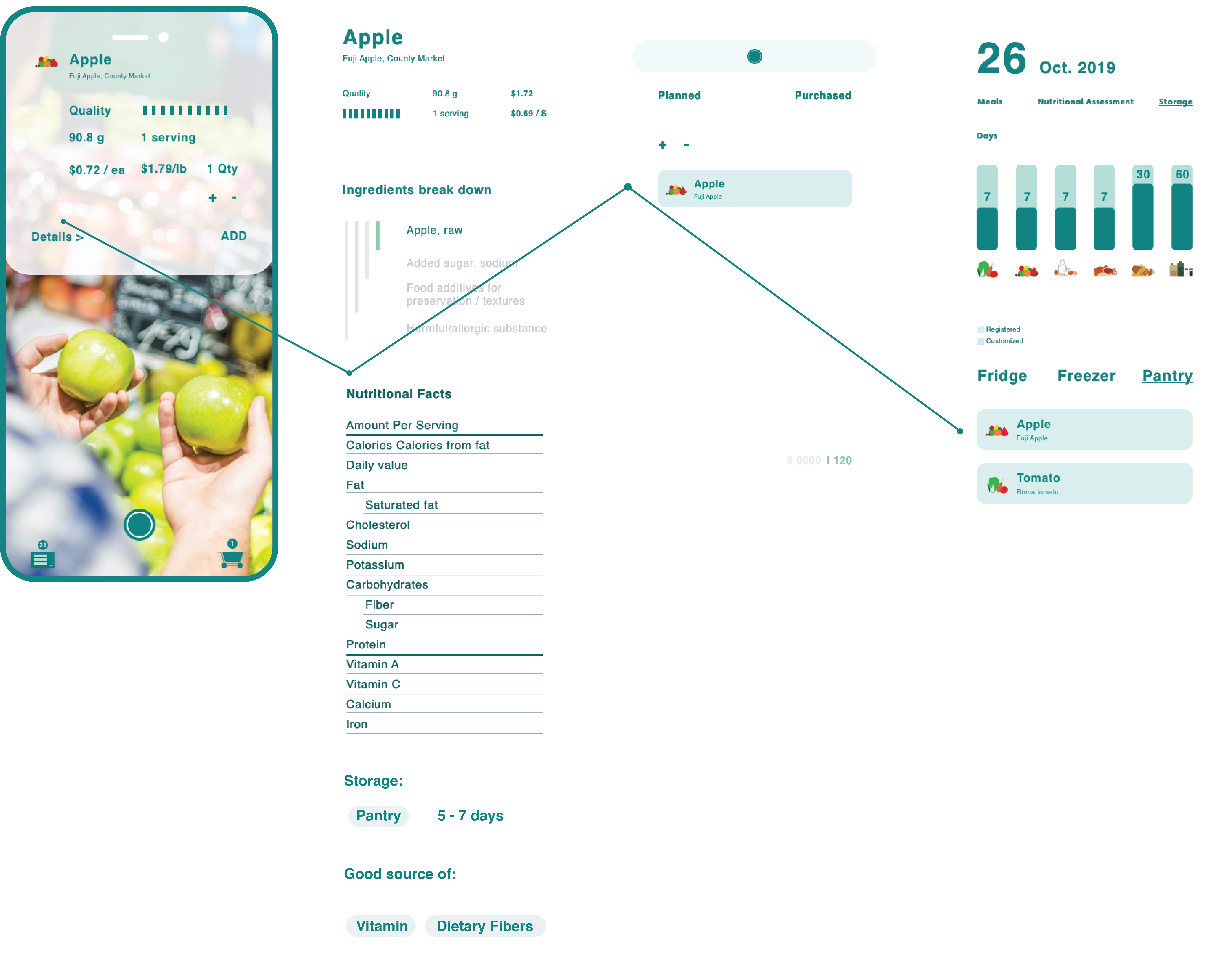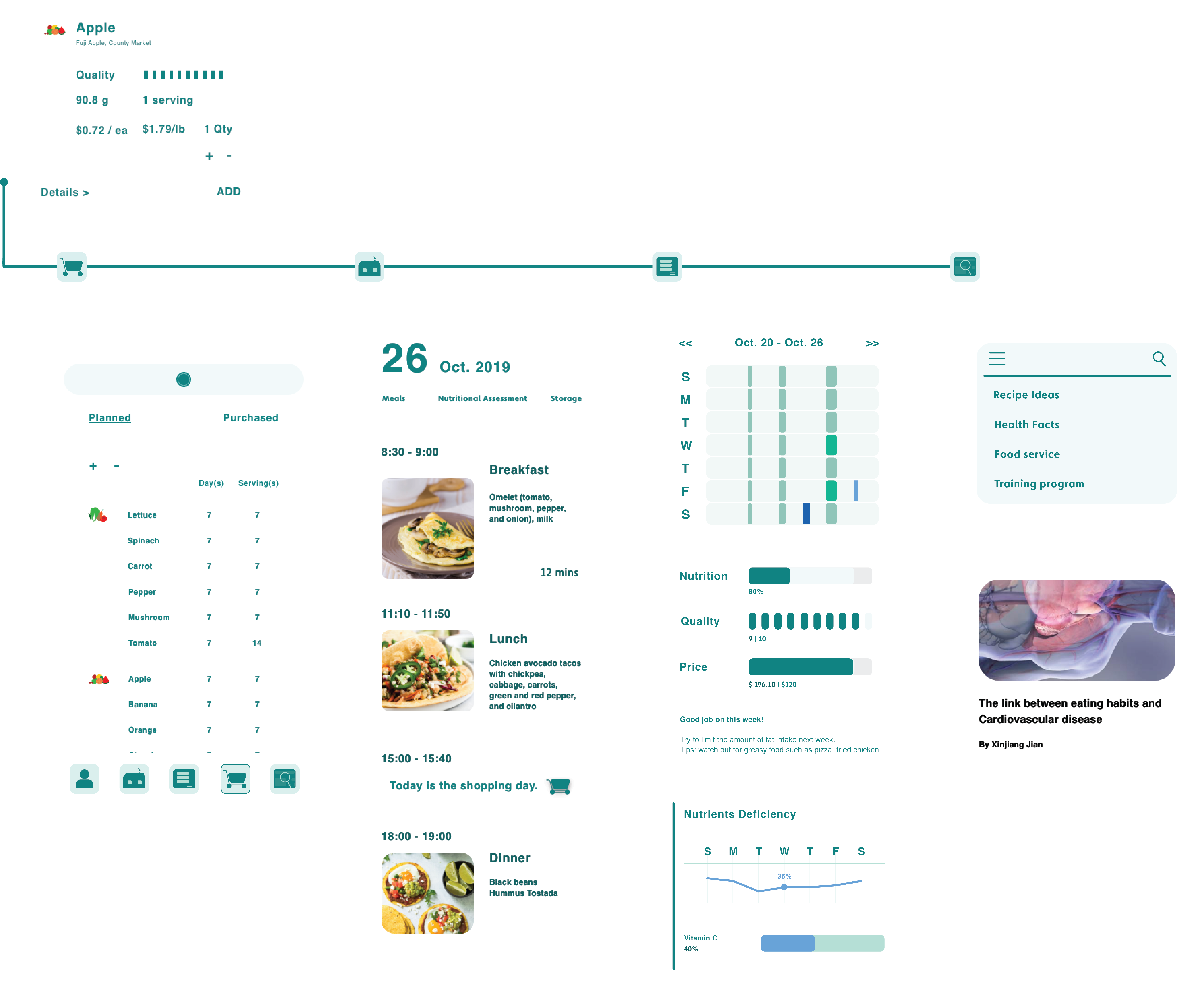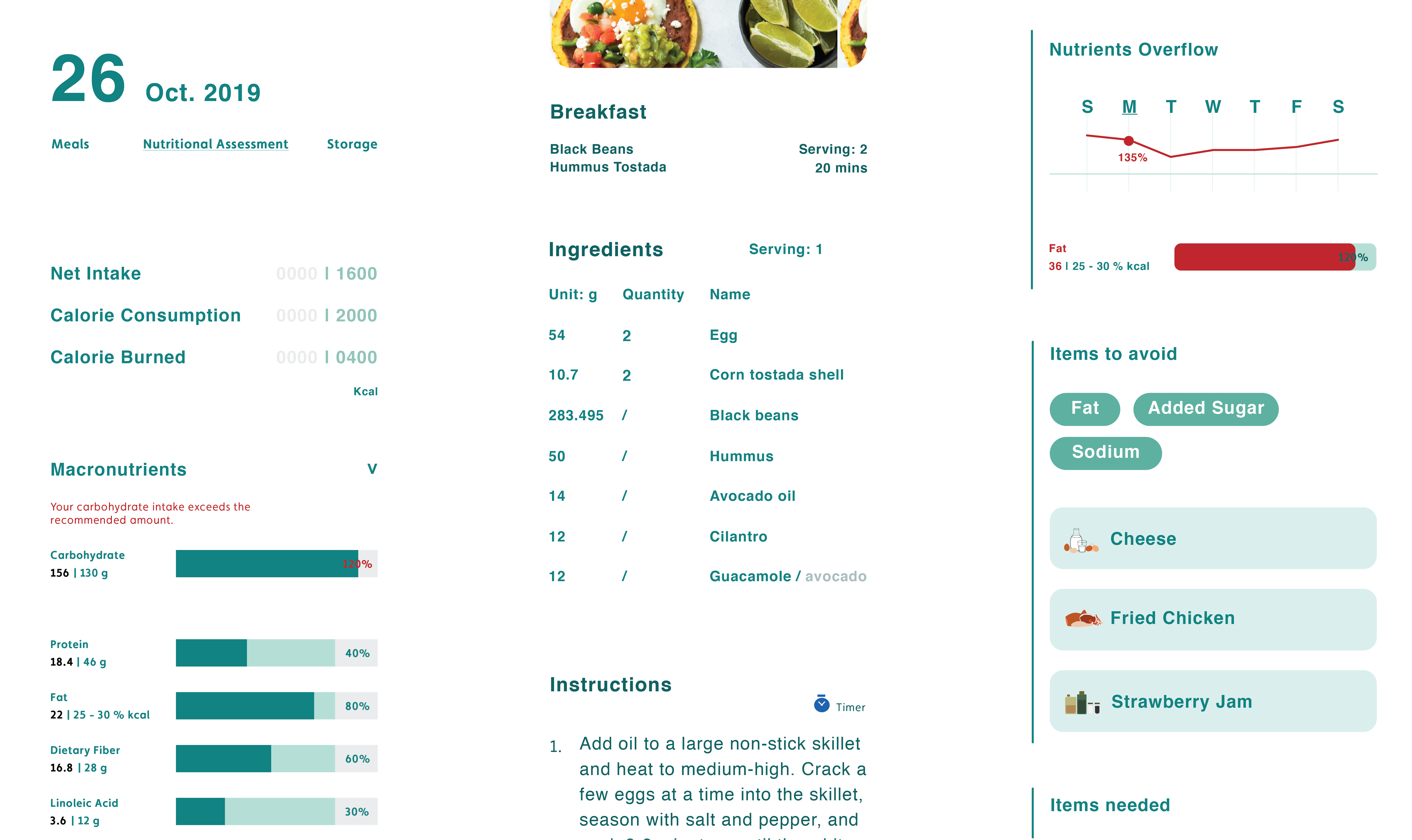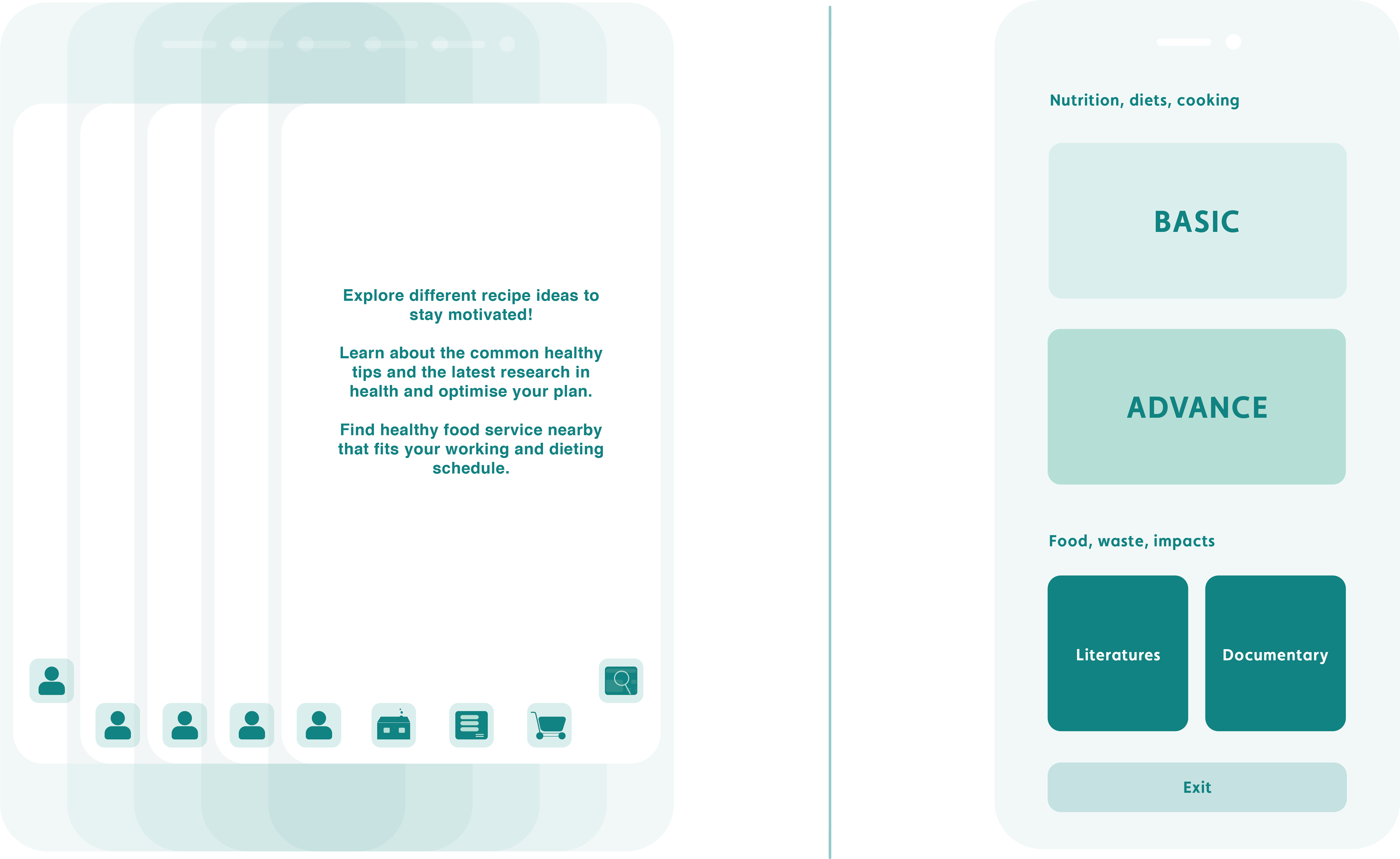Fresh Filter
Personal Nutrition Assistant
SEP. 2019
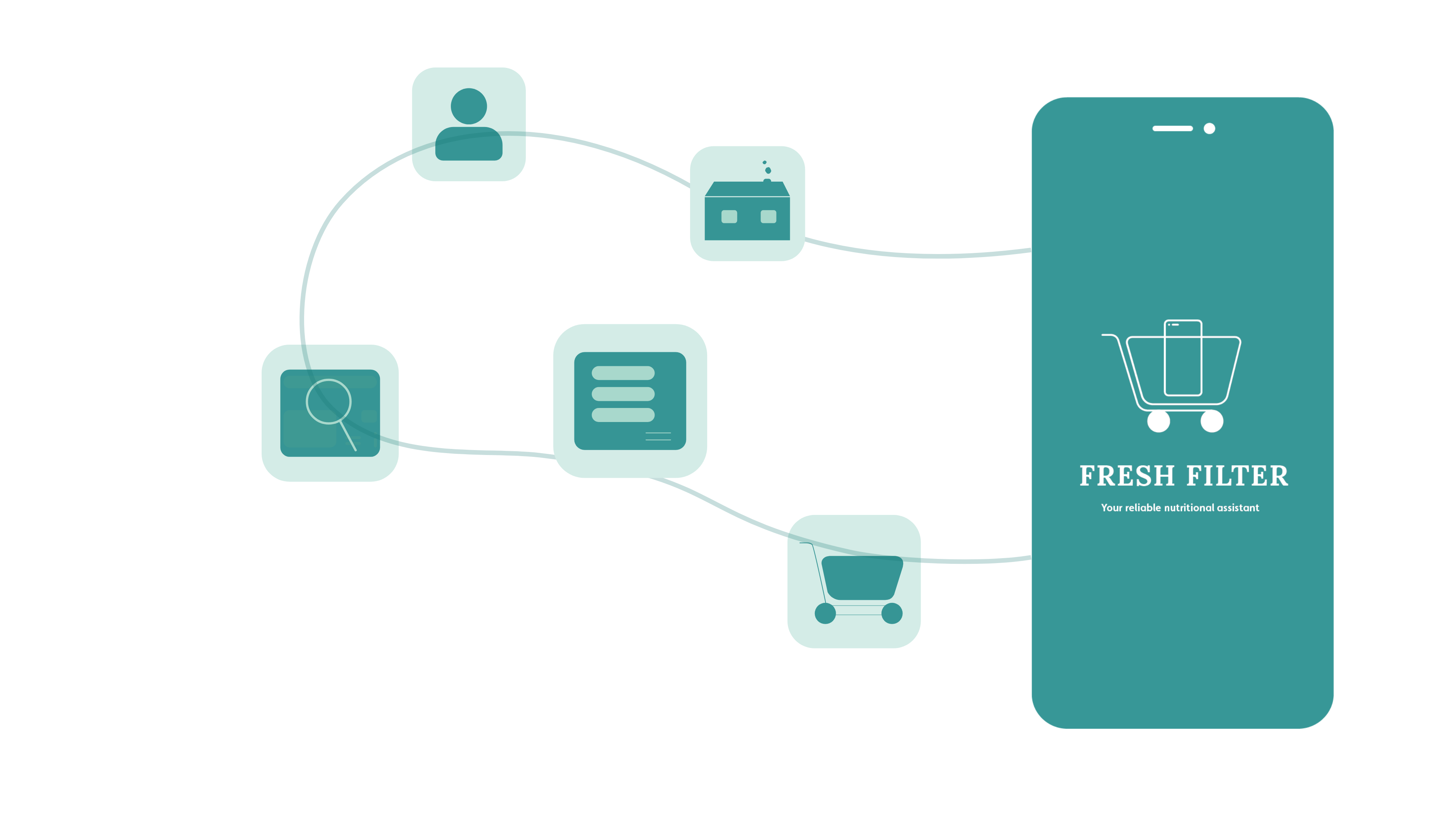


An application design that eliminates the barriers towards healthy and sustainable diets. It serves as a dietitian analyzing information relating to diet and health that guides the users in the shopping, cooking, and preservation processes.
As different users adopt different behavioral points, instead of crafting persona with a linear using processes, the application serves as a reference during discrete
decision making moments in different scenarios, such as at home and groceries.
It links these processes for each users and lifts the burden of precisely
calculating nutritional intake and budget, while eliminating unnecessary food waste.
Grocery shopping with quality and speed is made possible by the implementation of a filter feature that recognizes the food or
scans the bar code, revealing layers of processing (carbon footprint) and alerting harmful ingredients.
To achieve effective changes towards a healthy diet, the static dietary guideline is turned into portions for each specific food with units that are easy to apply, calculating macro and micro nutrients components in the food directly.
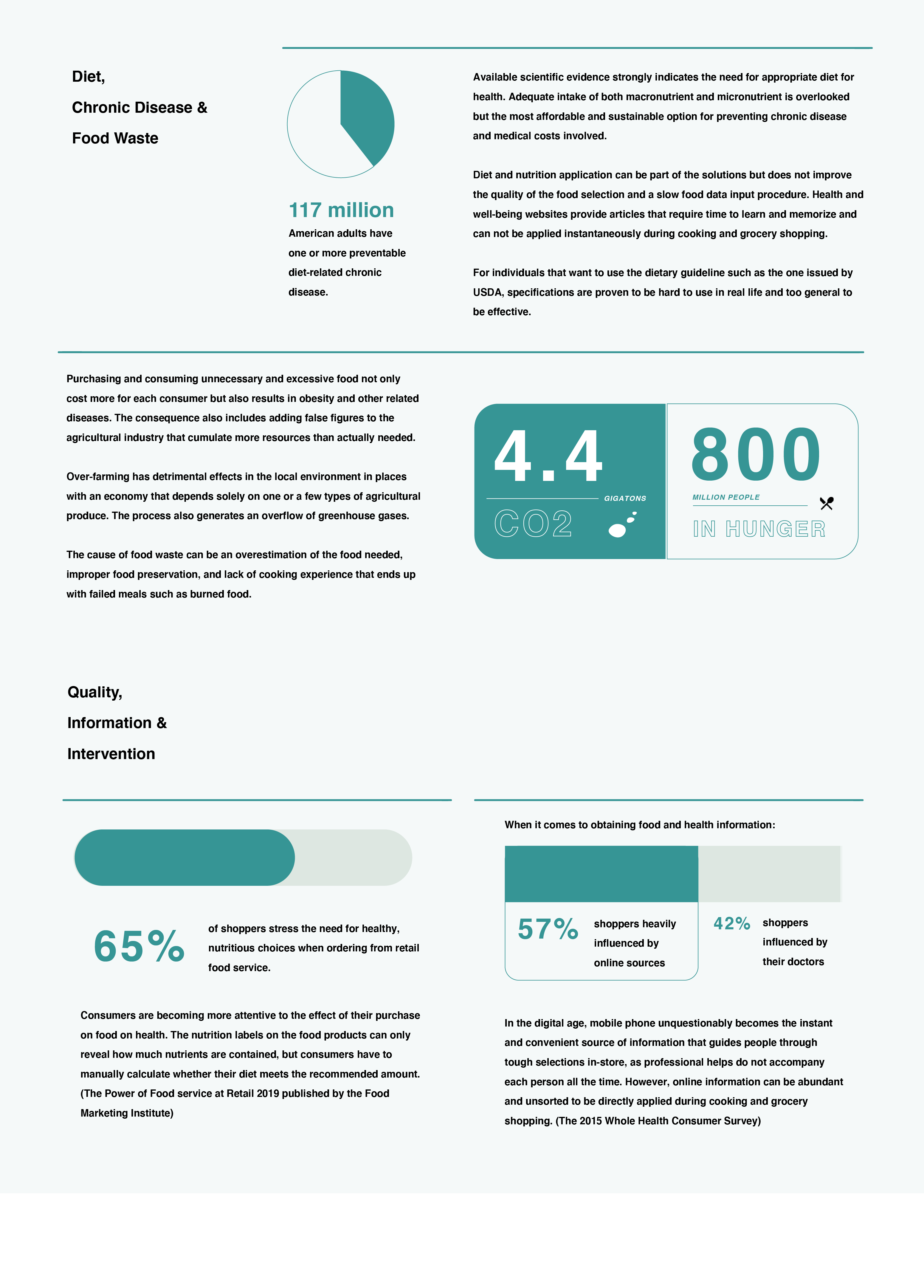
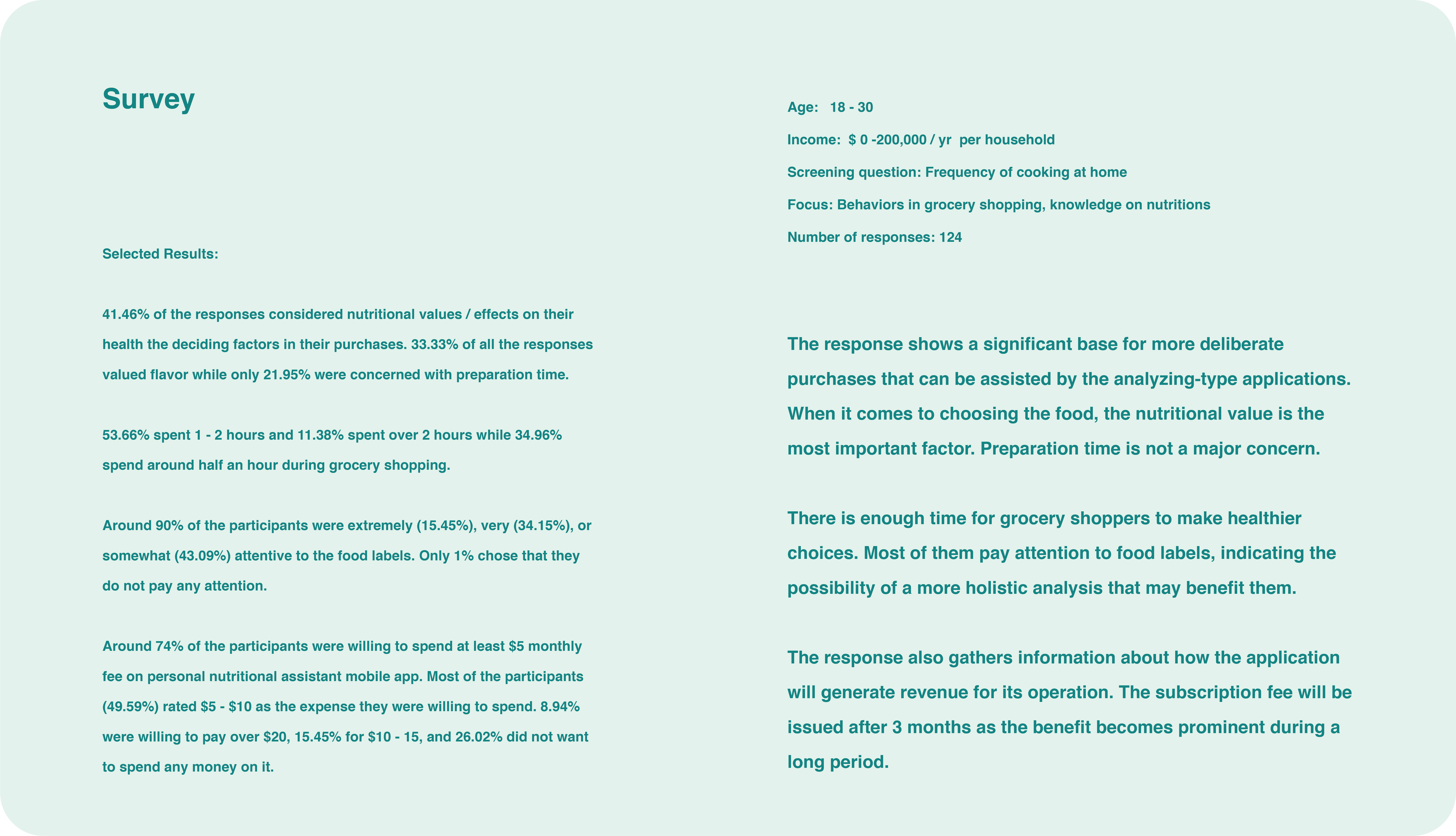
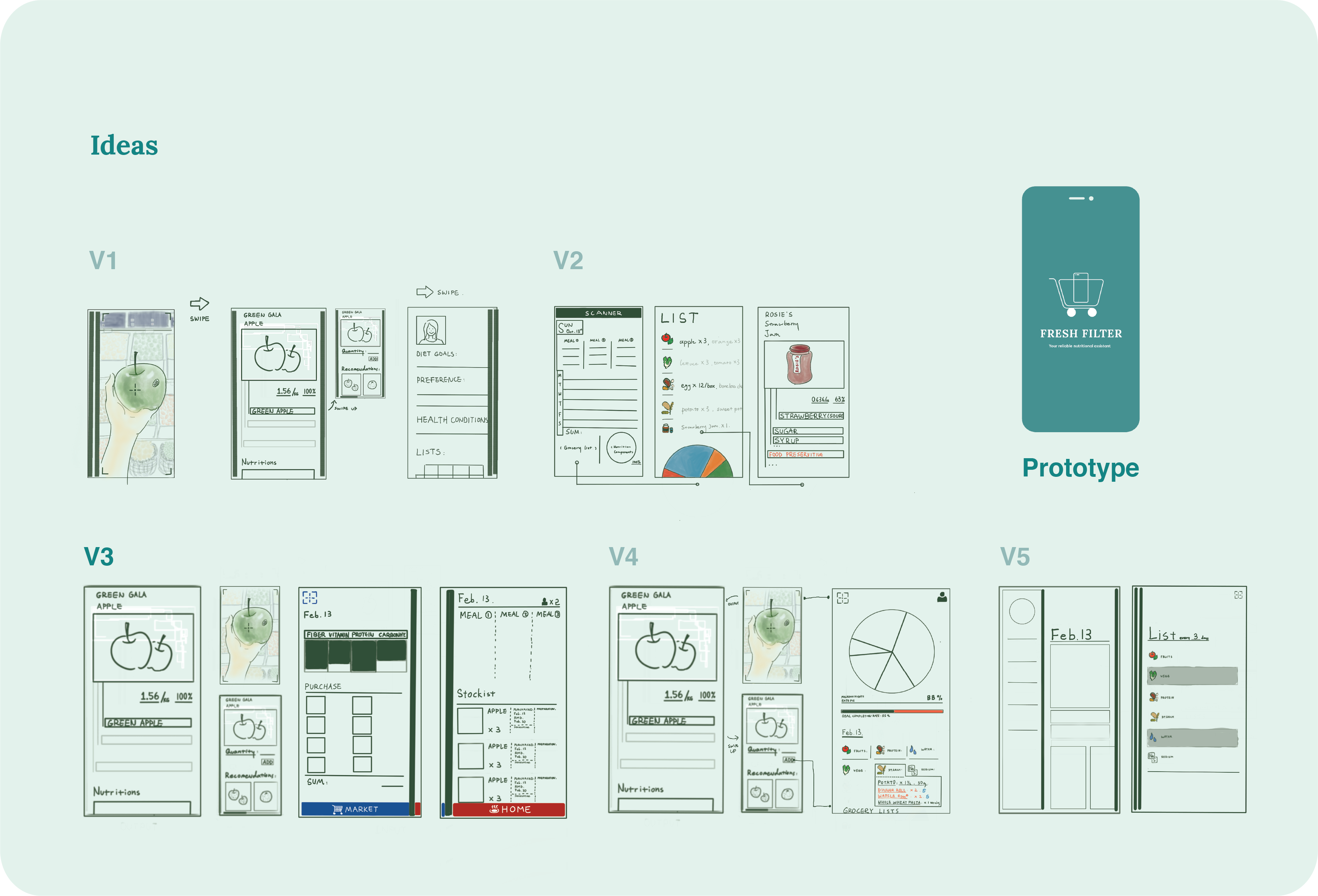

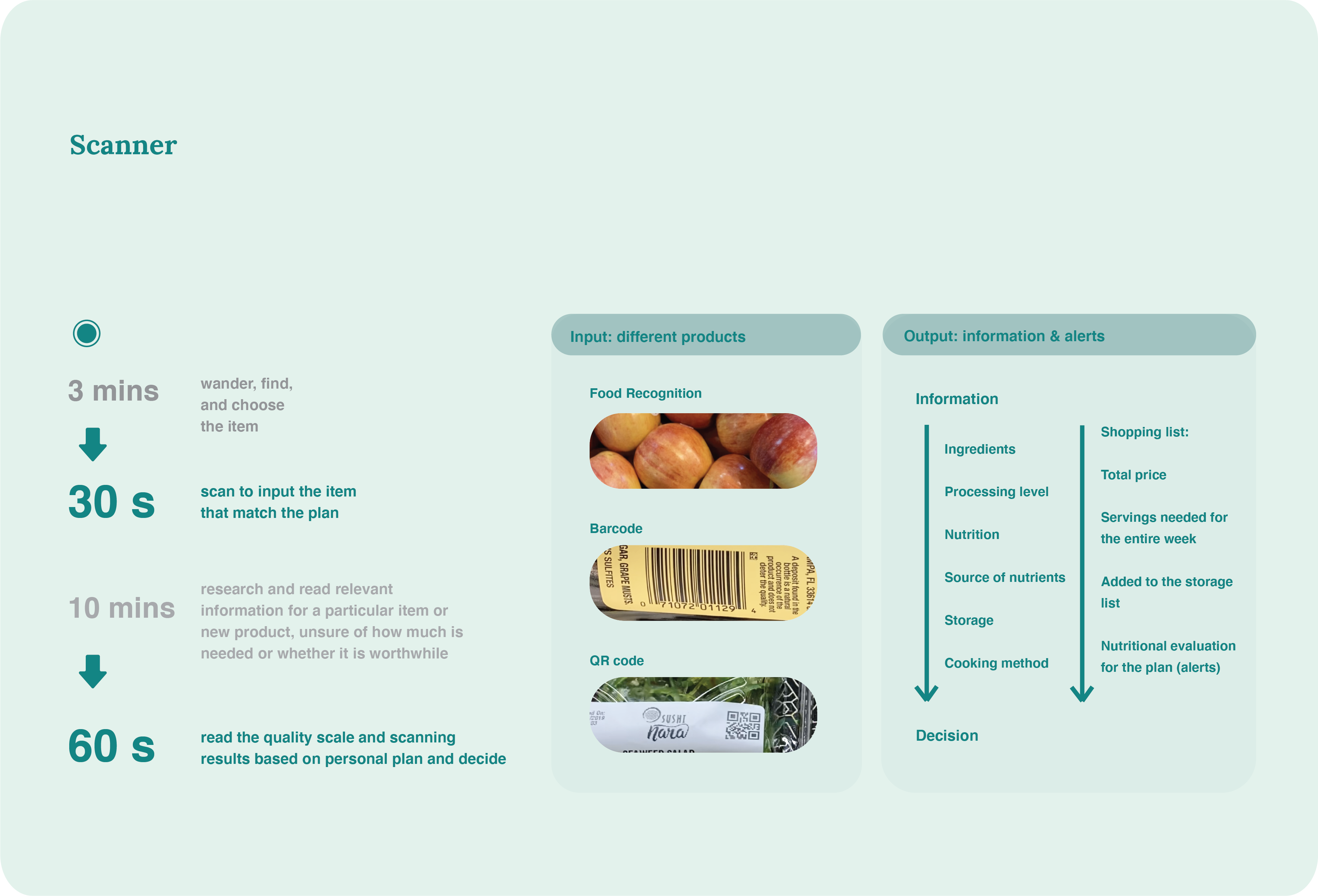
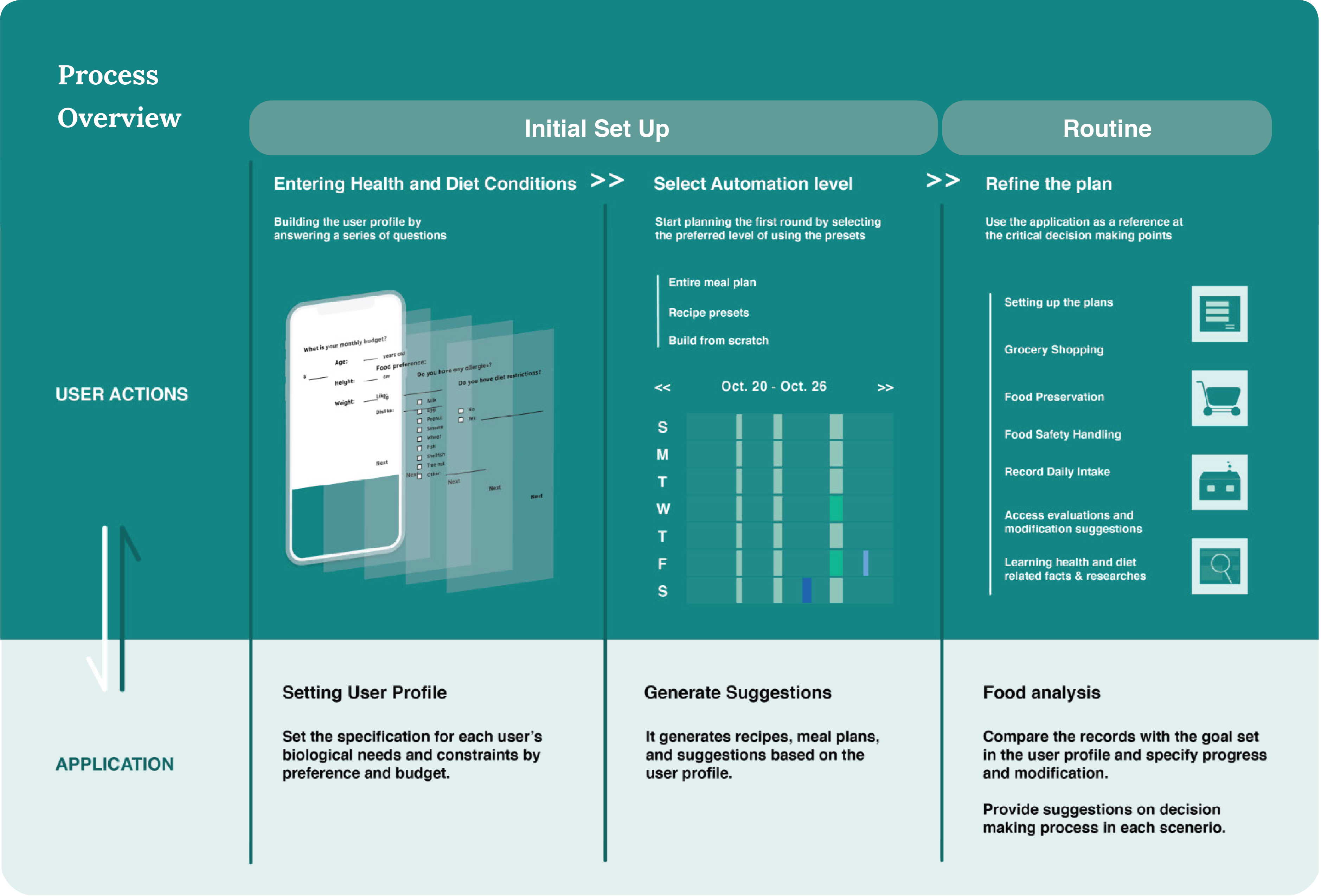
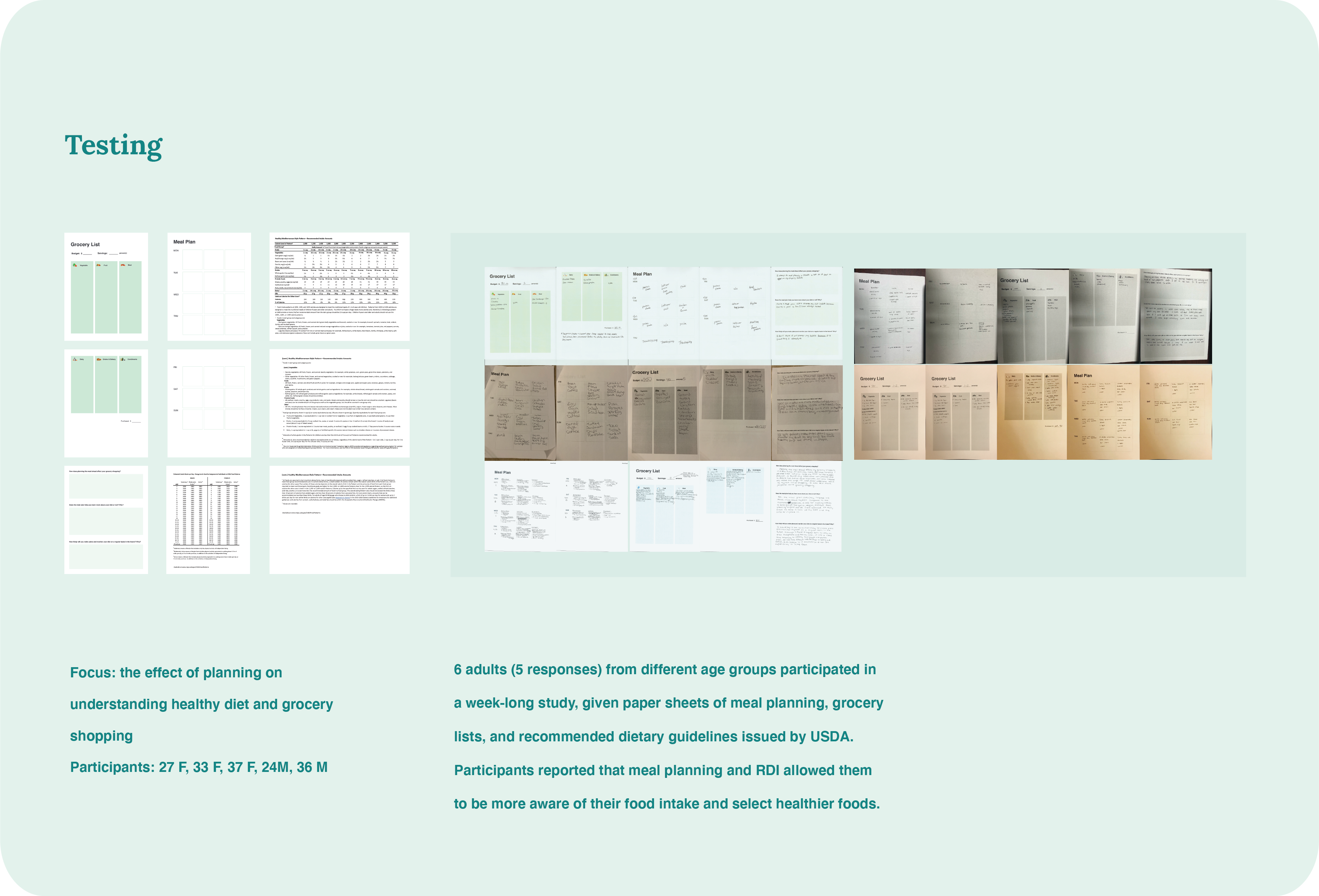
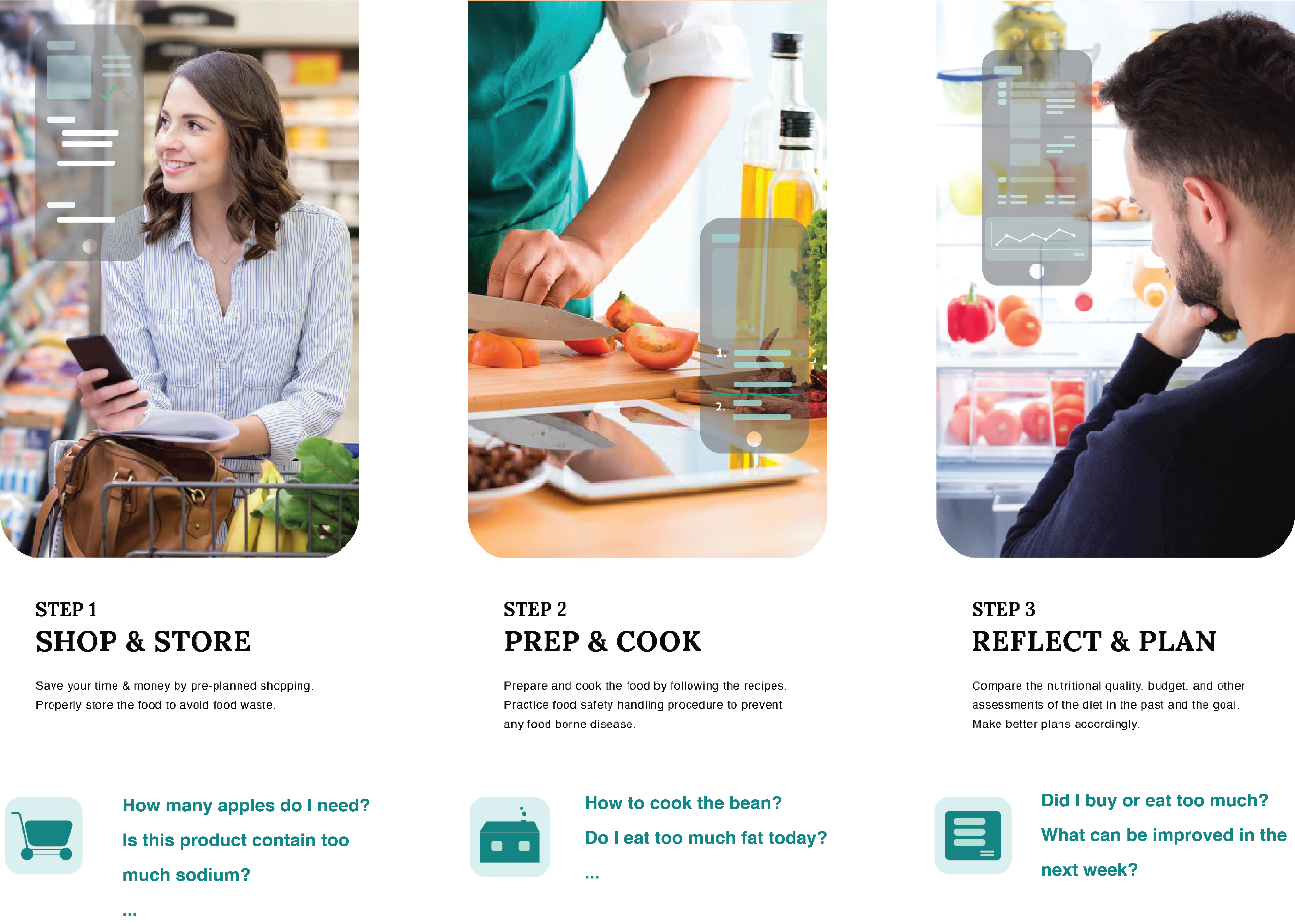
Some people may go to the grocery several times a week, while others only go for once. Behavioral points between different users may have overlaps, but can not be resolved into one single version of using process. Instead of crafting persona with a fixed using processes, the application serves as a reference during the discrete decision making moments in different scenarios, such as at home and groceries. Through each step, users can utilize the analysis to make informed decisions. By keep refining and stick to their plans, users can make improvements in their health.

